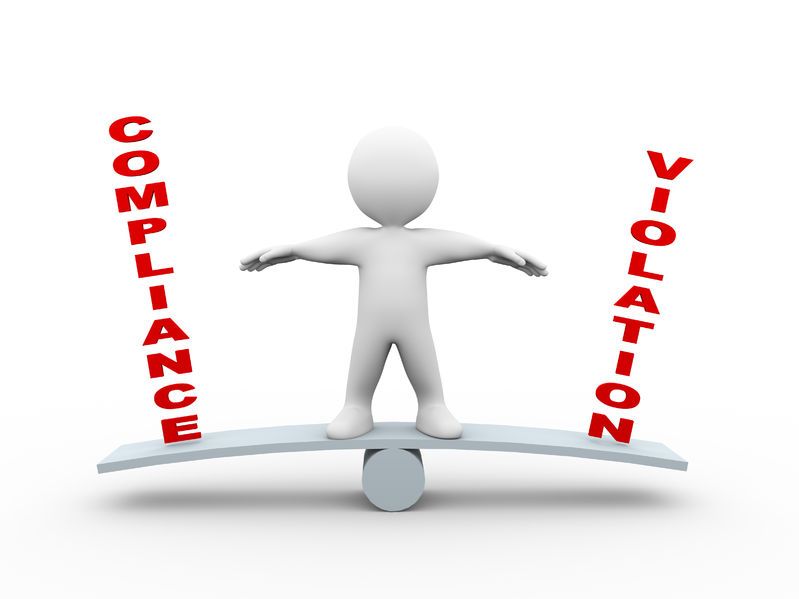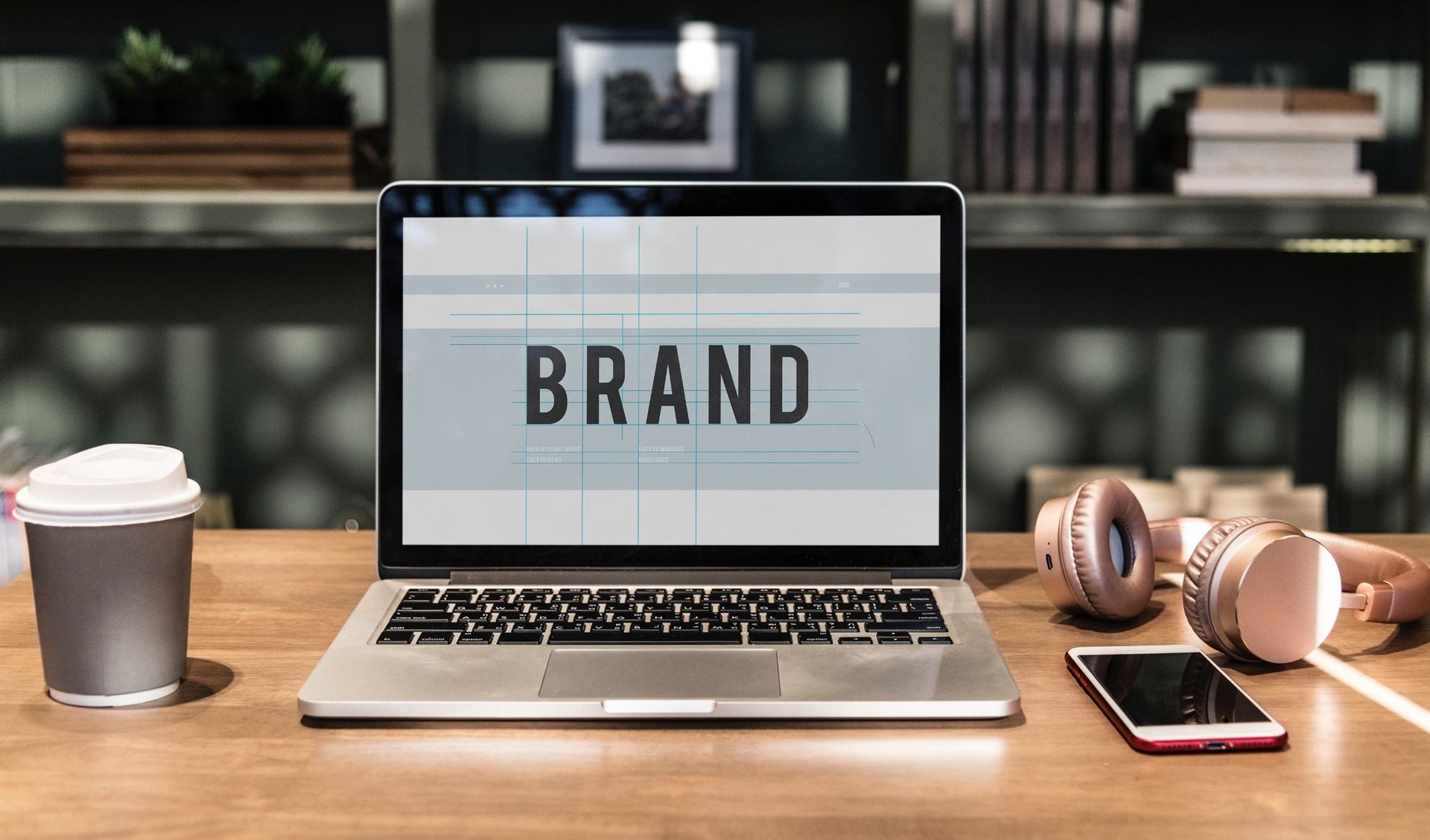Blog
Blog


28 Mar, 2024
If you let your employee handbook sit on the shelf and become outdated over time, you run two major risks. The first is that your employees may not have accurate info on what to expect from the company, and what the company expects in return. And the second is potentially serious legal issues from being out of date with policies. We recommend you audit your handbook at least annually to make sure it doesn't collect cobwebs and cause you issues. But how do you know what to look for? Here are a few key things to review: Legal updates. For example, if you haven't made a change to your employee handbook since before the COVID lockdowns, you're guaranteed to be missing some required policies. And states pass new regulations all the time, so you may be missing new policies you weren't even aware existed. It's risky business if your handbook doesn't match current regulations. Internal business changes. Many small adjustments don't seem worth a handbook update, so you decide "we'll just keep the handbook as it is for now, but enforce it this other way." You can get away with this in the short-term for a very small policy change. But the larger the change - and the longer it stands without an official update - the worse it can get. Not only is this confusing to employees, if your handbook is proven to be inconsistent and documented policies are known to be ignored, your employees (and courts of law) can assume that no one knows what's obsolete and what's still applicable, so none of it is enforceable. Changes to "Standard HR Practices." A solid HR policy from 20 years ago may have become legally risky over time based on court decisions. You may need adjustments to your handbook to help ensure that any legal challenges can be defended in the best possible way. Changes in technology. Just a handful of years ago, almost every residential service company provided company-owned phones to technicians, while iPads and tablets were rare on the jobsite. Now, with improved apps for phone systems, it's standard for companies to require employees to bring their own phones, and tablets are a necessity for many techs. Your company may have recently drafted policies on whether to allow ChatGPT or TikTok usage on company laptops, but a year from now these platforms may be industry standard... or be completely banned. Keep your employee handbook up-to-date with technology to ensure it's relevant to what employees are facing today, not what they dealt with five years ago. Your employee handbook can be your greatest asset or your greatest liability. It should be treated like a "living document" that grows, changes, and sheds irrelevant policies. If you've let your handbook go for longer than two years without an edit, it's time to take a closer look. What if you don't feel confident making updates yourself, or don't even have an employee handbook? That's one of our specialties at The Big Picture Consulting! Just reach out to us and we can help update what you've got or create you a personalized handbook from scratch.

14 Mar, 2024
Nearly every day I get questions, requests for advice, or requests for copies of Non-Compete, Non-Disclosure and/or Non-Solicitation agreements. I am professionally NOT a fan of over-reliance on these types of documents for several reasons. First and foremost, nothing says “Welcome to the team” on Day 1 like being handed several legal documents saying you are already looking for opportunities to sue them if/when they leave. 🤦 But let’s cover each of these documents individually to explore why I don't recommend them, and what to do instead. TOPIC 1: Non-Compete Agreements Simply put, they can be viable and useful when dealing with management or executive level employees… NOT line-level technicians or similar. You cannot prevent someone from earning a living in their field of knowledge/expertise. And why would you even want to try? So what is the alternative? For line-level employees, just don’t bother. Besides the fact that these agreements are becoming increasingly illegal (in CA it is about to become illegal to even present a non-compete that is known to be unenforceable), if you let someone go for good reasons, don’t you WANT them to become a competitor’s liability? 🤣 If the employee quits, they did it for their own reasons that everyone involved should learn from, not call out the lawyers. There is simply no path to victory for the Brand by getting into the fight – legally, or publicly when the story of “company vindictiveness” hits social media. While managers and executives do have access to higher-level business strategy information and may legitimately be restricted from jumping to another area company as a manager/exec, there are very simple steps both the ex-employee and/or competing company can typically take to get around any restrictions, especially the lower the level of management. Your best defense is to build and maintain a company culture that by its very nature minimizes the risk of people wanting to jump ship and sabotage your operation. Communicate and educate about how the grass is greener on YOUR side of the fence. It’s not perfect, but much more reliable than the spooky legalese of a non-compete agreement. TOPIC 2: Non-Disclosure Agreements (NDA) I hate to break it to you, but most of the information that companies attempt to protect with these documents is not special or private. Your marketing tactics are put in front of prospective customers every day. Your sales process is (if employees are following instructions) shown to multiple people every day. This becomes even more untenable once you factor in the contribution and influence of your chosen Best Practice Group, Coach, Mentor, and/or Guru you contracted to help grow and evolve your company. Just like non-competes, NDA’s are pretty much not worth it for any employee ranked lower than Senior Management. If you truly have a unique process, strategy, or marketing materials, take the steps to Trademark them rather than rely on legal documents that are insanely difficult to prove violation of. From the pure HR perspective, here is a quick reminder of the impact of NDA’s on the Day-1 Experience: “Welcome to the X team! So happy to have you join us… Now, sign here so we can sue you if you ever share the secrets of how we sell things outside of the group of people we are telling you to sell to.” TOPIC 3: Non-Solicitation Agreements Last, but not least, is non-solicitation. Many employers are actually concerned about this when developing non-compete/disclosure agreements. In the legal world, being precise in your word choice matters. There are two areas of non-solicitation that warrant attention… though at the end of the day, I still don’t find formal legal documents beneficial, either as a real deterrent or for ongoing team morale. Start by asking: who are you looking to prevent ex-employees from soliciting? Marketing to your Active Customer List THIS is worthy of consideration. Your active customer list can and should be protected as proprietary company property. However, there is little to no benefit in drafting a legal document threatening to sue a new employee over the list. Alternative to Non-Solicitation Agreement: Include properly written policies in your employee handbook identifying customer lists as company property, and state that failure to return ANY company property is legally actionable theft. Then, if you find an ex-employee targeting your customer base, you can go after them. Just be aware that if someone markets to a neighborhood that just happens to include specific customers, there is likely no provable violation, regardless of legal document or employee handbook. Enticing Former Co-Workers to their New Business I never understood the logic of this. Do you seriously think you can prevent friends from talking to each other after one quits or is fired? Do you really want to forcibly retain employees, let alone those with divided loyalties because they buy the story of their buddy on how they were mistreated (always 2 sides of the story)? Alternative to Non-Solicitation Agreement: I love the alternative, and clients tend to be shocked when I tell them: “Get ahead of the conversation with your team. TELL them why you let so-and-so go or their stated reason for quitting, pretty much as soon as they are out the door.” There are no confidentiality concerns 99% of the time. If you as management can accept your failings in the situation that caused the employee to leave, own that, along with what you’ll do to minimize the risk of it happening to others. At the end of the day, you need a team that trusts management decisions, and the best way to achieve this is proactive and intentional communication. Invite employees to ask questions to alleviate their concerns. If they really want to take the exited employee’s side, it is better to promote them to customer before they turn toxic and further undermine the brand. To summarize: Most “legal” documents that are used to theoretically protect the business, such as Non-Competes, Non-Disclosures, and Non-Solicitations, are not worth the paper they are printed on. They amount to little more than paper shields that in reality serve as a wedge between employer and employee that can hinder a long and profitable relationship. Company culture can minimize the risk of employees (or employers) from going off script or against the Brand and causing damage. Intentional communication, setting clear expectations, and meaningful accountability in real time will be WAY more beneficial than threats of lawsuit.

05 Mar, 2024
As it relates to testing positive for COVID-19, many of our clients follow a “CDC recommendation” policy. Up to this point, the Centers for Disease Control recommended 5 days isolation from start of symptoms or positive test, whichever was earlier, followed by 5 days of masking/distancing as possible. The CDC has officially updated their recommendation to something similar to the flu or any other respiratory illness: Stay home when feeling sick. Return to work when feeling better AND fever-free for 24 hours without medication. If you wish to continue following the CDC recommendations with this adjustment, simply inform your team of the update as quickly as reasonably possible. If you have a team meeting scheduled soon, I recommend using that opportunity to have everyone sign an acknowledgement form (the same form we recommend for safety training). This is not a requirement by any means, just a solid recommendation to best ensure everyone is on the same page. If you believe the CDC guidelines are now too loose, you can officially implement whatever level of response/restrictions you wish for COVID, flu, or any other illness. If you're already a BPC client, you can just let us know and we can help craft a more formalized policy so you are no longer tied to the CDC recommendation system. Finally, regardless of whether you follow the new CDC recommendation or enact your own, please remember two things: Not everyone's body will respond to COVID in the same way, and some people may need more or less time off to recover than others. Like individual companies, some states may still take it upon themselves to enact more strict policy requirements to respond to COVID. CA actually softened its suggested response before the Feds did, so I do not know how likely this course of action is… I will keep an eye on WA, OR, and NY and let those impacted clients know if your state gets squirrelly. 😊 Proceed accordingly and keep your team safe, healthy, and working! For reference, here's the new CDC guidance: https://www.cdc.gov/media/releases/2024/p0301-respiratory-virus.html

29 Feb, 2024
Many articles and posts have been written about leadership vs. management, and when each may be called for. But let's get into the specifics here: how do you show up to your employees as an empowering leader rather than "The Man" who makes them want to rebel? Consider the analogy of using the carrot (reward) vs. the stick (punishment). The Man (or The Woman, of course) focuses primarily on the stick, and may forget about the carrot altogether. This type of boss will demand, coerce, punish, and react. If employees follow at all, it's be because they have to, not because they're inspired or they align with the company vision (which they may not even understand). If you're this type of boss, you likely get a push-back or even blatant refusal when you instruct employees on policies or procedures. And even when a leader has the best of intentions, once employees and managers rebel, the leader naturally moves even more firmly into The Man category, making even stronger demands, and the situation continues its downward spiral. In general, a good leader will use the carrot more than the stick. Leaders work to convince, inspire, reward, and respond. When faced with an issue, they'll investigate and look to solve the bigger picture rather than reacting to a specific situation out of context. At times they'll have to make demands, but wherever possible they'll give the reason behind it to help get the team on board. When they ultimately need to use a stick, leaders will carefully consider whether the situation calls for a big club, or if maybe a popsicle stick could be sufficient. Example: John is late for work a second day in a row. The Man will react. He'll reprimand John (potentially using a pre-determined point system) because tardiness is unacceptable. The leader will respond. He'll ask what's going on and, upon learning that John's wife is sick and he's been on his own to get the kids to school, he may simply adjust John's morning schedule to minimize business impact during this temporary family situation. Which of these two bosses will John choose to follow for the long-term? And even more importantly... which one has actually helped the problem? Despite his best intentions, John may be late again the third day, and only the second boss has put a plan in place to protect the business from this possibility. Last thing: be aware that every company has a leader. If it's not the owner/manager, it's likely another employee. This individual may not have positional authority, but is able to inspire and convince others to follow. And if this unofficial leader's way of thinking is at odds with the company's goals, you're going to end up with conflict. Having informal leaders isn't a bad thing in itself, as long as you understand who they are and can focus your leadership tactics on them specifically. If you can convince and inspire your company's leaders to work with you rather than against you, you're well on your way to a cohesive team with everyone willingly moving in the same direction to help your company succeed.

by Jessica Doboszenski
•
13 Feb, 2024
Work-Life Balance is a tough line to walk… especially in the trades. What would your response be to this type of signage showing up in your office or shop? Too much "fun" and personal connection can not only reduce operational efficiency, but can also lead to sub-group politics or social drama that NO employer (or even most employees) really wants to deal with. But too much of a “work is all that matters” attitude from the top not only causes an "Us vs. Them" mentality, it can also create the very situation you are trying to prevent. The best tools to manage this balance without resorting to signage like this (not illegal, but certainly not advised) are Intentional Communication and Accountability! When efficiency drops… Steer the team members involved back on course, or out the door as needed. When stress levels and complaints are high, and morale is visibly low, ASK QUESTIONS to learn why, and work with whomever you need to guide the team back on course. Work is not your daycare. But if your workplace lacks any personality, camaraderie, or joy, the best employees won't stick around very long. You need to find the balance.

26 Jan, 2024
Employee engagement... What does it mean? Loosely translated, employee engagement is the measure by which employees are actively following the processes, company mission/vision, and/or any other directives you have given them. While there are a LOT of things that go into this concept as part of the big picture of your business, here are three areas every company can immediately focus on to maximize employee engagement: Recruitment. Representing your company to potential hires needs to go beyond the traditional job posts on Indeed or Zip Recruiter. Use social media and local events to spread the story of why people should want to join your team. When done correctly, potential employees will already have a measure of trust building with your brand before they even fill out an application. Trust improves engagement. Day 1 Experience. NOTHING kills future employee engagement like walking through day 1 feeling like an afterthought... or worse, a burden to management and coworkers. Be prepared for your new hire to start. Plan events and steps in the process such as getting into uniform that are all ready for them, accessing systems using pre-established email addresses, usernames, etc. Coordinate a meet and greet with the team, and a day 1 ride along if at all possible. While some paperwork and policy documents are necessary, MINIMIZE exposure to any scary legalese documents you may still be using, even just until the next day. The better the day 1 experience, the less likely you will have a dramatic day 90! TRAINING, TRAINING, TRAINING! Lay out expectations and provide the necessary tools and training to make those expectations possible! Training needs to be both engaging and intentional to increase buy-in. Boring training leaves the impression that management does not actually care about it... So why should the employee? Do whatever it takes to make training a purposeful tool to engage employees in what it means to correctly represent the Brand. For an ideal example of these principles, look no further than Amanda Triolo and her team at Grasshopper . They are simply AMAZING at all three of these... As always, I hope this helps.

18 Jan, 2024
The #1 response I get when informing a business owner that a certain business practice can/will get them into trouble is: "I've been doing business this way for X years without a problem." The #2 response is: "But all of the companies in my area do it this way..." Guess what... I tell them the same thing I am telling you. Run your business compliantly from the beginning and you won't need to worry as much about getting blindsided by a disgruntled ex-employee or alphabet soup government agency! While this advice applies for pretty much every business scenario, today I want to talk about how your use of subcontractors this might get you into trouble. That's because in early January 2024, the DOL issued their Final Rule for Independent Contractor classification to be effective 3/11/2024, which will change the definition to be more stringent. As a general principle, I am not in favor of using subcontractors in the trades except as a legitimate support function that is not required regularly (HVAC subbing for an Electrician from time to time is fine... Subbing for Install work? Not so much). My reason is that a subcontractor by definition cannot represent your BRAND! Why would you trust your customers to someone you have little to no way to hold accountable if things go sideways? For those companies that are using subcontractors, here are the new 6 conditions from the DOL that will be reviewed during any sort of lawsuit or investigation. Opportunity for profit or loss depending on managerial skill. If a worker can set or negotiate their pay, accept or decline jobs, choose the time and order to perform jobs, advertise its business, and hire others: the worker is more likely to be an independent contractor. This factor observes that the risk of loss must be based on the worker’s managerial decisions. Thus, workers who incur few to no costs or expenses, provide only their labor, and/or are paid an hourly or flat rate are unlikely to experience loss and thus unlikely to fall under independent contractor status. Investment by the worker and employer. A worker is more likely to be considered an independent contractor if the worker bears investments that increase his/her ability to do more work, different types of work, reduce costs, or extend market reach. In contrast, costs borne by a worker simply to perform their job (for example, tools and equipment to perform a specific job) are not evidence of capital or entrepreneurial investment. In addition, this factor indicates that the worker’s investments should be evaluated relative to the employer’s investments. Degree of permanence of the work relationship. This factor weighs in favor of a worker being an independent contractor where the work relationship is definite in duration, project-based, nonexclusive, or sporadic. However, a sporadic work relationship due to the temporary or seasonal nature of the job does not indicate independent contractor status. Similarly, if the work is indefinite in duration or continuous, then the worker is likely an employee. Nature and degree of control. This factor focuses on whether the employer retains control over meaningful economic aspects of the work relationship. The Rule not only considers control over scheduling, supervision, price, or ability to work for others, but also considers control that is merely reserved but not exercised as “control.” Additionally, any control exercised to ensure compliance with legal obligations, safety standards, or contractual or customer service standards indicates employee status. Extent to which the work performed is an integral part of the employer’s business. This factor addresses whether the worker’s performance of work is an “integral part” of the employer’s business. If the worker’s performance of work is “critical, necessary, or central to the employer’s principal business” then this factor weighs in favor of employee status, whereas a worker that performs work that is more peripheral to the employer’s business is more likely to be an independent contractor. This goes back to my example of how you might subcontract an HVAC tech to help your Electric company but you can't subcontract an HVAC tech to help your HVAC company. Skill and initiative. While a worker’s lack of specialized skill to perform the work indicates that the worker is an employee, a worker that is highly skilled in a particular field is not automatically assumed an independent contractor. Rather, the DOL looks to whether the worker’s skills are used in “an independent way” and in connection with “business-like initiative.” WHY should you worry about this? Because if/when a subcontractor is found to be misclassified, the business owner is immediately liable for unpaid taxes, insurance premiums, fines, fees, interest, OVERTIME, and more... So not worth it in my book. Take a look at your business and any subcontractors you may be using to make sure you feel confident given this new Final Rule. Any questions? Reach out to The Big Picture Consulting and we can help!

10 Jan, 2024
A key factor in the success of your business is getting employees to "represent the Brand." So when do employees start to see what your Brand is, and what it might me to represent it? It begins long before their first day on the job! The employee journey through your Brand begins when they see how you're recruiting and presenting yourself on social media, and by talking with friends and family who may have worked with your company before. That means the way you're presenting yourself online isn't just to potential EXTERNAL customers but to your future INTERNAL customers too (aka, employees), and it's important to be thoughtful about how you do it. Here are a few tips and tricks to representing your Brand right from the moment someone comes across your company. Share authentic photos of your company and employees on social media, not just stock photos of hypothetical fake happy people. Let everyone see that employees genuinely enjoy working for you. When someone comes in for an interview, give them a surprise. Instead of beating on all the details of legalese or inevitable drug tests, see how the applicant responds to the "interesting." For example, how do they react when you ask them to sing you a song like Happy Birthday or Twinkle Twinkle Little Star? This will bring a sense of levity, and it demonstrates to potential employees that you're not just any old boring company. It will give you an idea of how they'll respond in a surprising situation, without being so deadly serious that it throws them off or turns them away from your Brand altogether. Make sure you communicate intentionally what it means to represent your Brand, and what will happen if they don't. We all know that people can "break the system" with an interview process, telling you exactly what you want to hear without meaning any of it. You won't know what they're really like until they're on the job. By being upfront about your Brand, you can get to the heart of the matter during the initial contact points. Don't just ask if they can do the necessary tasks, but ask yourself if this someone you can see representing your Brand. Once you've brought someone onboard, you can continually reinforce your Brand. But taking these steps FIRST will give you a head start on bringing in the right people who you know will be happy to join you on your path.

11 Dec, 2023
It's the time of year for holiday parties! You want your company’s holiday party to be fun... but how many of us have been to a company party that's taken a turn for the worse because people acted poorly? Most of these potential issues can be addressed and prevented if you plan ahead. Let's be honest: these party problems are usually caused by alcohol consumption. You can reduce the risk by having a party with no alcohol, which is easy if you do a family-friendly event during the day. But if you want to serve alcohol at your company party, we've got some tips to help the event go smoothly. The first and most glaring risk with alcohol consumption is a legal one. Employees leaving a company function drunk can (legitimately) hold the company liable if something happens. There aren’t many ways around this risk, but limiting the amount of free/cheap alcohol can reduce how much most employees will drink. Depending on the situation, providing one glass of wine or beer during the meal may be appropriate. Or perhaps two drink tickets, and after that it's just a cash bar. These tactics will also limit the company's financial investment! A second concern is how employees will behave once alcohol starts flowing. Employees who “participate enthusiastically” could behave in any number of inappropriate ways. In addition to limiting cheap alcohol, we recommend you do the following: Conduct training before the party. Remind your employees that the point of the party is to relax and have fun, and being around drunk coworkers isn't fun. It isn’t “cute” for an employee to start hitting on another employee (or another employee’s spouse!), or for a fist fight to break out because alcohol caused someone to say something stupid. It’s even worse if you get called into the manager’s office on Monday because of behavior you don’t even remember. Once you point these things out to employees, remind them that this IS a company function, and any inappropriate behavior that violates company policy will STILL result in disciplinary action. Plan for who will be on-call for customer emergencies, if necessary. Make sure you discuss this before the party, and outline your expectations for limiting alcohol consumption (maybe soften the blow through a gift card to a local restaurant, since they can’t drink at the party). Designate someone to handle situations at the party itself. Despite your best efforts, someone could still over-consume. Pick someone in a leadership role to refrain from drinking and to monitor employee behavior throughout the night. This person needs to be willing and able to take an employee’s car keys, call the police if necessary, and otherwise take action to solve an evolving and dangerous situation. In addition to considering what happens at your own company party, if you have on-call employees you need to think about the impact of other events that they might attend during the season. How would you handle your on-call tech showing up drunk to a customer’s home? What policies can you put into place to prevent this from happening? Again, it's best to plan ahead and make expectations clear. Also of note, particularly in states where marijuana is legal, recreational drug use is becoming more common at holiday parties. We recommend you tell employees that pot is NOT permitted at company parties, and be prepared to handle situations that arise. Once your employees know what's expected of them, and the consequences for poor behavior, there's no reason you can't all have fun together and let loose after a year of work. Plan ahead, and enjoy your holiday celebration!
Content, including images, displayed on this website is protected by copyright laws. Downloading, republication, retransmission or reproduction of content on this website is strictly prohibited. Terms of Use
| Privacy Policy

